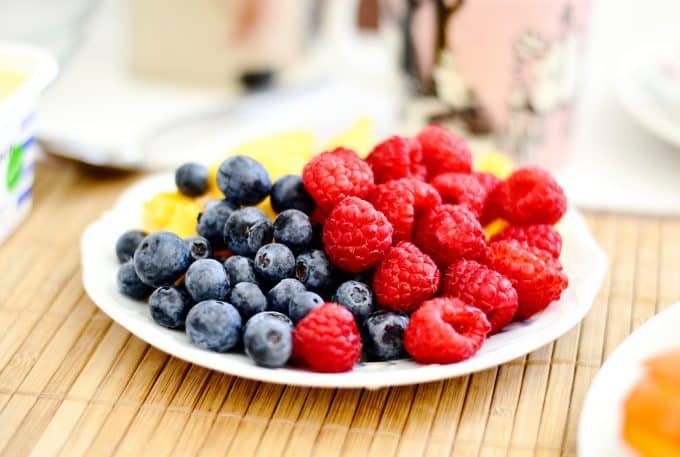Last Updated on May 4, 2023 by Dr Sharon Baisil MD
There are plenty of foods that diabetics should and should not eat in their daily diabetic lifestyle. Knowing which diets and foods suit your health and which don’t is very important.
Among the several food items which are recommendable for diabetics, are you wondering:
Is Dalia one among them?
Can a diabetic patient eat Dalia?
What are the benefits of Dalia?
Does Dalia increase weight?
What are the best Dalia recipes for diabetics?
And so on? We have the answers that you are looking for. Let us get started without further ado!
Can a Diabetic patient eat Dalia (Bulgur)?

Yes, indeed. Dalia or Bulgur is a very healthy item that diabetics can eat. It is safe and also makes a healthy breakfast, snack, lunch, or even dinner.
Dalia is recommended for people who suffer from diabetes as a healthy and versatile food option. It can be included as any meal and can also be paired with a variety of other foods.
Dalia is a natural and unrefined variety of wheat. It has all the good fiber and minerals that wheat has to offer.
Dalia is broken wheat or Bulgar wheat. It is a whole grain packed with many good nutrients. It does not go under a lot of refining or processing that may strip off the goodness it has to offer.
Bulgar wheat or Dalia has a very low glycemic index. You can even include more quantities of it and it will still be healthy.
Due to fewer amounts of in Bulgar wheat, it does not harm the diabetic sugar levels. It is rather good for slowing down the process of digestion, which further aids in controlled sugar releases.
Another very beneficial nutrition found in Dalia is fiber. Fiber is a miraculous element for diabetic individuals. Adding fiber to the diet is the utmost necessity as it prevents and controls high blood sugar levels.
The presence of fiber in your food can keep the digestive system properly functional. It reduces the pace of digestion, thereby, slowing the absorption and releases of sugars. Ultimately it assists in avoiding any sudden rises in blood glucose levels.
Moreover, Dalia is also great at reducing the risks of insulin resistance. Thus, it helps in the management of diabetes.
Dalia is a very filling supplement and can keep one full for long. The fiber in it satisfies the appetite and reduces unhealthy cravings.
Dalia also keeps the weight under control. It is a great weight-loss agent for diabetics, pre-diabetics, weight-watchers, etc.
Thus, Dalia is an extremely healthy food option for diabetics. Let us move onto some further details about the boons of Dalia on one’s diet.
Glycemic Information of Dalia

Dalia (Bulgur) is said to fit into one’s diabetic diet routines. This is stated as Dalia is low in Glycemic ranges.
Let us see what the Glycemic ranges mean.
The glycemic ranges are used to determine if a specific food is safe for diabetics or not.
There are two major Glycemic Indicators. They are:
- Glycemic Index: Measure of carbohydrates that indicate if a food is safe for diabetic consumption.
- Glycemic Load: The effect of the food on one’s blood sugar levels according to its carbohydrate-content and quantity that is eaten.
Both, the Glycemic Index and the Glycemic Load are divided into three major categories.
All foods are ranked numerically and divided into categories. These categories classify the foods as low Glycemic, Medium Glycemic, or High Glycemic.
Let us have a look at the Glycemic categories.
| Sl. No. | Glycemic Category | Low | Medium | High |
| 1. | Glycemic Index | From 0 to 55 | From 56 to 69 | 70 or above |
| 2. | Glycemic Load | From 0 to 10 | From 11 to 19 | 20 or above |
The food items coming under the Low Glycemic Index and Load ranges are safe for diabetic consumption. They do not have any effects on glucose levels. They are recommended foods for Diabetics.
Medium Glycemic foods are said to be good for diabetic individuals only when taken in moderate amounts. They should be fitted according to one’s health and Diabetic conditions.
High Glycemic food items are best avoided for diabetics. They can have extremely unstable effects on blood sugars. It can cause harmful spikes and discomforts and therefore, must be avoided for safety.
So you might be wondering –
What are the Glycemic ranges of Dalia?
The following table answers your question –
| Food item | Glycemic Index | Glycemic Load |
| Dalia | 41 (low and safe) | 9.4 (low and safe) |
Hence, this proves that Dalia is safe for consumption by diabetics. It doesn’t cause a raise in blood sugar level nor does it have any harmful effects on the body.
As the Glycemic ranges of the Dalia are low, they can be easily paired with a variety of other foods. You don’t require worrying about the consumption of excess dangerous carbs with Dalia.
A good amount of Dalia will also not harm the diet, but will rather benefit health.
9 Nutritional Benefits of Dalia
The table below lists the nutrients found in 100 grams of Dalia:
| Sl. No. | Nutrients found in 100 grams | Available amount |
| 1. | Calories | 152 |
| 2. | Carbohydrates – Fiber – Sugars | 27.7g – 1.4g – 0.97g |
| 3. | Fats – Trans-fat – Saturated fats – Polyunsaturated fats – Monounsaturated fats | 3.41g – 0g – 1.615g – 0.47g – 0.89g |
| 4. | Proteins | 5.03g |
| 5. | Sodium | 143mg |
| 6. | Potassium | 193mg |
| 7. | Cholesterol | 6mg |
| 8. | Calcium | 35mg |
| 9. | Iron | 2.4mg |
A 100g serving of Dalia has around 152calories.
One person’s recommended serving size is a bowl of Dalia. It accounts for 120 grams of Dalia. Thus, a recommended portion of Dalia supplies with 182 calories.
It can be an excellent breakfast option. You can make Dalia with milk as porridge, or as Khichdi with vegetables. We have the best recipes for you following up.
But before that, let us know –
What are some advantages of the nutritional contents of Dalia?
- Dalia is a super-food for weight loss. It has very minimal amounts of fat and is great for weight-watchers. It can be paired with lots of fiber and protein-rich vegetables and pulses to make tasty low-fat dishes.
- The fiber richness of Dalia also helps to maintain the levels of cholesterol in the body. This aids in keeping away heart-related diseases and complications.
- Broken wheat has brans, which is the outer layer of wheat, containing all the good nutrients and fibers. The fiber in Dalia prevents spiking blood sugar levels and helps in diabetes management.
- Dalia is also packed with iron. The iron-content in Dalia can help against conditions such as – Anemia, Low Hemoglobin, fatigue, etc.
- Magnesium found in Dalia is also very useful in maintaining heart-health. Magnesium is an utmost crucial mineral for the body. It assists in keeping the blood pressure under control.
- Dalia is also rich in another useful mineral – Potassium. Potassium is necessary to maintain muscle health, fluid and water retention, blood pressure, keep away kidney issues, etc. It is also helpful in reducing hypertension and other neural issues.
- The presence of many minerals such as – magnesium, calcium, phosphorus, etc. assist in keeping the overall bones healthy. Also, potassium in Dalia helps in the absorption of these minerals.
- Dalia supplies the body with plenty of protein. Protein is necessary for the development and growth of the body and the immune system. It also assists growth in children, reproduction in women, and so on.
- Dalia also provides an individual with Vitamin B nutrients such as – riboflavin, Niacin, Thiamin, etc. These nutrients encourage better metabolism and also encourage energy supply.
With these numerous health benefits, Dalia makes it a great diabetic food choice.
It is versatile, nutritious, and tasty. It accounts for a healthy food item be it for any meal.
Best Dalia (Bulgur) recipes for Diabetics
Dalia Dosa

Ingredients:
- Dalia (1/2 cup)
- Green moong (1/4 cup)
- Masoor dal (2 tbsps.)
- Urad dal (2 tbsps.)
- Chopped veggies: onions, green chilies, coriander, curry leaves
- Fenugreek (1tbsp.)
- A pinch od Asafoetida
- Turmeric
- Salt
- Oil (3 tsps.)
Method:
Soak the Dalia with the pulses for about 2 hours in water.
Blend it all in a paste with water and add the chopped veggies.
Add in all the spices and mix the batter well.
Heat a bit of oil in a pan and add in a ladle of the batter and spread it to form a Dosa.
Cook both sides evenly and serve hot.
Dalia Khichdi

Ingredients:
- Dalia ( ½ cup)
- Cumin seeds (½ tsp.)
- A pinch of Asafoetida
- Chili powder (½ tsp.)
- Turmeric
- Salt
- Chopped veggies – onions, tomatoes, cauliflower, ginger, garlic
Method:
Start with dry roasting the Dalia on a pan for 2 to 3 minutes.
Heat little oil in a pressure-cooker and add the cumin. Add the ginger and garlic.
Add all of the chopped veggies and cook and stir for 5 minutes.
Add in the rest of the spices to the vegetables and add in the roasted Dalia.
Pour approximately two cups of water and pressure cook until three whistles.
After the three whistles, open the lid and add in two more cups of water and mush everything together until it forms a Khichdi-like consistency. Serve hot and fresh.
Dalia fruit Porridge

Ingredients:
- Dalia (1 cup)
- Milk (4 cups)
- Cardamom powder (1 tsp.)
- Cinnamon powder (1 tsp.)
- Chopped fruits: apples, berries, bananas, etc.
- Optional: diabetic sugar
Method:
Begin with dry roasting the Dalia in a pan for about 5 mins.
Then add in milk and spices.
You can add fewer amounts of sugar, honey, or your diabetic sugars if you want. It is healthier to skip sugar.
Close with the lid and let it cook for 5mins.
You can either store the Dalia for later meals or directly add in the fruit toppings.
Serve at the desired temperature.
Dalia Pulao

Ingredients:
- Dalia (½ cup)
- Chopped veggies: French beans, carrots, bell peppers, green chilies
- Oil (1 tsp.)
- Cumin seeds (½ tsp.)
- Salt to taste
Method:
Start with dry roasting Dalia on a pan for three minutes.
Heat a pan, pour in a little bit of oil, and sauté the cumin. Add in the vegetables and fry well while stirring.
Add the dry roasted Dalia and mix thoroughly. Add the spices.
Pour 2 cups water and stir. Let it cook for around 15mins with occasional stirring. Serve hot Pulao.
References
https://pubmed.ncbi.nlm.nih.gov/3962904/
https://pubmed.ncbi.nlm.nih.gov/32227786/
https://pubmed.ncbi.nlm.nih.gov/3383733/
https://pubmed.ncbi.nlm.nih.gov/22540912/
https://pubmed.ncbi.nlm.nih.gov/31672703/
https://pubmed.ncbi.nlm.nih.gov/28155258/
https://pubmed.ncbi.nlm.nih.gov/24158434/
https://pubmed.ncbi.nlm.nih.gov/22633932/
https://pubmed.ncbi.nlm.nih.gov/31828863/
https://pubmed.ncbi.nlm.nih.gov/30016529/






Excellent informatio.